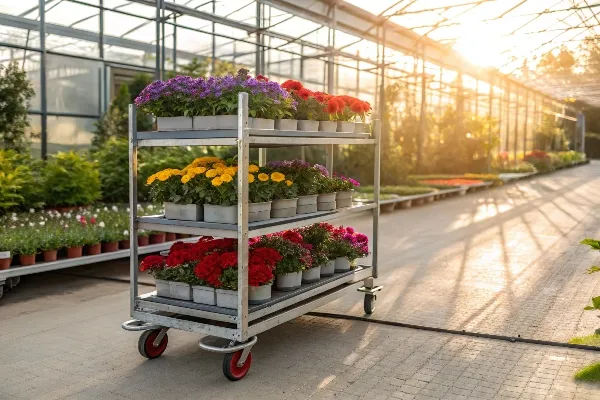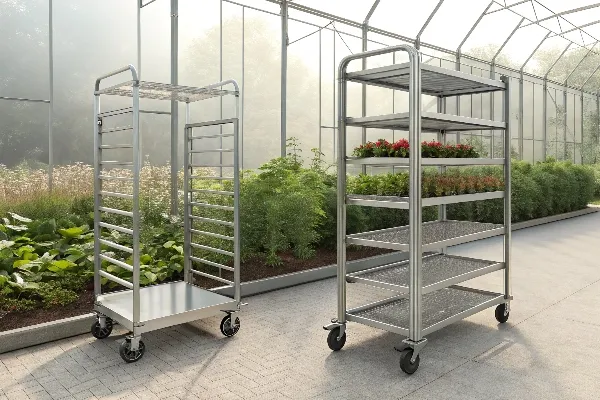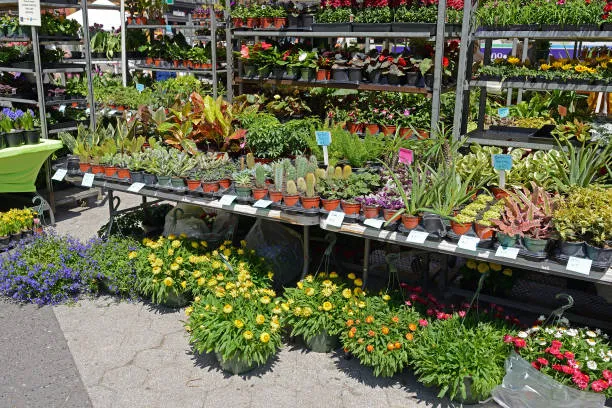Avoid your inquiry is delay response, please enter your WhatsApp/Skype along with the message, so we can contact you at the very first time.
We will reply you within 24 hours. If for urgent case, please add WhatsApp/WeChat: +8613791936882 ,. Or call +86-18678911083 directly.
Easily moving large pots can feel impossible and draining. I used to dread hauling them around, until I discovered an easier way.
If heavy plant pots constantly strain your back, the right tools and methods can make it simple.

I have helped many retailers and gardeners who struggled with bulky plant pots. They kept asking for a better system—one that doesn’t involve risking injury or wasting time. Over the years, I realized trolleys, especially FangSheng Danish trolleys, solve many of these problems. Let me explain why.
Carrying heavy pots by hand often leads to backaches and damaged floors. I wanted a safe and efficient way to move large pots.
A trolley is a wheeled cart used to transport items with minimal effort. The word “trolley” stems from early references to wheeled frameworks for carrying goods.

The trolley, in its simplest form, is a platform on wheels. People used it to move various goods—groceries, luggage, and, in our context, heavy plant pots. The design concept is basic: a stable frame, smooth casters, and enough surface area or railing to keep items from falling. That design makes it easy to push, pull, or steer through narrow spaces without lifting the load.
I remember when I first introduced a trolley system to a local garden center. The staff was spending hours each day carrying heavy ceramic pots across the store. They risked injuries, scuffed up the floors, and sometimes even broke the pots by accident. After switching to trolleys, they cut their pot-moving time by half. More importantly, they saved their team from unnecessary back pain and strain.

You might think any cart with wheels is a trolley, but there’s a subtle difference. A trolley is usually open-faced, allowing you to load items on top. It doesn’t have a large, fully enclosed box or extra compartments. It’s meant for quick transport, offering easy access to items. That helps with plant pots because you can place them on the trolley without lifting them too high or maneuvering around tight corners.
Another part of the trolley’s appeal is its adaptability. You can add shelves or rails, customize the height, or use specialized attachments for pots. Many trolleys are made of steel or aluminum, ensuring they can handle heavy loads. Some include braking systems to keep them from rolling on slopes. Others feature soft rubber wheels that protect delicate floors.

Historically, the term “trolley” surfaced around marketplaces, shipping docks, and eventually warehouses. As large-scale gardening and plant retail grew, these same designs were adapted. They offered a practical way to move soil bags, planters, and fragile items like seedlings without carrying them by hand. By using a trolley, you reduce the risk of dropping heavy objects, and you speed up daily tasks by moving multiple items at once.
Today, the word “trolley” covers many types of wheeled carts, from the ones used in grocery stores to those found in warehouses. Each version has a slightly different name or specialty, but the core idea remains the same: a sturdy, wheeled platform that takes the strain off your arms and back. For individuals like Sophia, who regularly moves flower displays in her retail store, or for large garden warehouses handling hundreds of pots daily, a trolley is an indispensable piece of equipment.
I used to assume all trolleys were the same. But I soon realized the Danish trolley is unique.
A Danish trolley has modular shelves, adjustable heights, and strong frames, making it essential for transporting heavy pots efficiently.

I remember meeting a friend who managed a big greenhouse. She told me about the endless chore of moving large pots, trays of seedlings, and heavy bags of soil from storage to display. Ordinary carts often tipped over, or they didn’t fit well into tight areas. Then she introduced Danish trolleys1 into her workflow.
The Danish trolley stands out for several reasons. First, it has a compact design that still handles heavy loads. The standard footprint is narrow enough to fit through most doors and aisles, yet the frame is strong enough to carry multiple pots at once. This design originated from Europe’s horticulture industry, where growers needed a reusable, space-saving system to transport plants to markets.
One key feature is its modular shelving2. That means you can add or remove shelves based on your pot sizes. If you have tall pots, you can remove a shelf to accommodate that extra height. If you have smaller pots, you can stack multiple levels, effectively doubling or tripling the quantity transported in one go. This flexibility is a game-changer when you handle different pot shapes or tall flowering plants.
I’ve also noticed that Danish trolleys are often made from galvanized steel3. That offers protection against rust, essential for greenhouse or outdoor use. Since the trolley might get wet or be exposed to humidity, rust-resistance extends its lifespan. For busy garden retailers who move stock outdoors and indoors all year, this durability translates to money saved on replacements.
Another advantage is the smooth caster wheels. Many Danish trolleys include high-quality wheels that swivel effortlessly, even when loaded with significant weight. This makes it easy to maneuver around corners and between display racks without accidents. When dealing with very heavy plant pots, you want to be sure the trolley remains stable. Some models have brakes or wheel locks, so the trolley stays in place when you load or unload heavy items.
I recall one scenario where I had to help move dozens of large floor-standing planters. Each planter was about 50 kilograms, heavy enough that two people would normally struggle. Using a standard flat cart was awkward because the planters kept shifting and bumping each other. Once we used a Danish trolley with adjustable shelves, we separated each planter securely. We also used side posts to keep them from sliding off. The difference was immediate: less breakage, smoother movement, and faster turnaround.
Danish trolleys also work well in retail environments because they can double as display stands. You can roll the trolley onto the shop floor, arrange your items, and let customers pick from it directly. That cuts down on transferring pots to separate shelves. For a florist like Sophia, who has a busy store with multiple displays, this is a huge help. She can rearrange her displays quickly during peak seasons without lifting pots individually.

Furthermore, the standard dimensions of a FangSheng Danish trolley let you fit multiple units neatly into a transport vehicle or shipping container. That means you can load them in, drive to an expo or event, and roll them out without unpacking every pot. Over time, that efficiency adds up—less labor, fewer damaged pots, and a more professional look when you arrive. Because of these benefits, I now recommend Danish trolleys to anyone regularly moving heavy plant pots, regardless of their business size.
When I see how easily these trolleys glide over greenhouse floors or warehouse spaces, I realize the difference a well-designed tool can make. It goes beyond convenience. It’s about preventing injuries, preserving your inventory, and optimizing your workflow. In my experience, once you try a Danish trolley for moving heavy pots, you won’t go back to simpler carts or manual lifting.
Using the right trolley, especially a Danish trolley, is key to moving heavy plant pots without breaking your back or damaging your goods.
Explore how Danish trolleys can revolutionize your greenhouse operations with their unique design and features. ↩
Learn how modular shelving can enhance your plant transport efficiency and adapt to various pot sizes. ↩
Discover the advantages of galvanized steel in greenhouse equipment and its role in durability and rust resistance. ↩